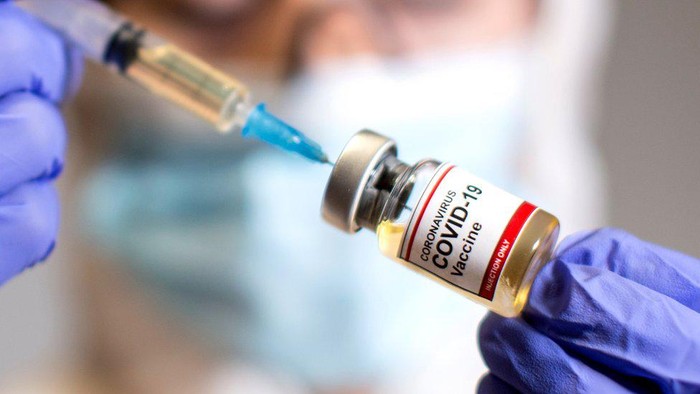
The long-awaited moment has arrived. The announcement of the Sinovac vaccine clinical trial results and the issuance of an Emergency Use Authorization (EUA) to PT Bio Farma as the vaccine carrier in Indonesia are finally all set. The announcement has answered at least most questions regarding its efficacy and safety.
The Sinovac vaccine, which showed an efficacy of 65.3 percent, is declared safe. It has side effects but mild and reversible. Concerns related to antibody-dependent enhancement (ADE), as many mentioned on social media and feared, did not occur in the Sinovac clinical trial in Indonesia, Turkey, and Brazil.
“But perhaps, this raises queries too. Why is the efficacy lower than in Turkey or Brazil? How come it’s lower than the Pfizer and Moderna vaccines, which are said to be up to 90 percent?” said Prof. Dr. apt. Zullies Ikawati, Head of the Doctoral Program in Pharmacy Science, responded to BPOM’s (Indonesian food and drug monitoring agency) announcement of the vaccine test results at the Faculty of Pharmacy UGM on Tuesday (12/1).
Zullies explained a vaccine with 65.3 percent efficacy in clinical trials meant a 65.3 percent reduction in disease cases in the vaccinated group against the unvaccinated (or placebo) group. And that occurred in a controlled clinical trial. For example, she described the Sinovac clinical trial in Bandung involving 1,600 people; 800 subjects who received the vaccine and 800 subjects who received a placebo (blank vaccine).
If 26 of the vaccinated group infected (3.25 percent), while 75 of the placebo group contracted Covid-19 (9.4 percent), then the efficacy of the vaccine was = (0.094 – 0.0325)/0.094 x 100 percent = 65.3 percent. So, what determines the results is the ratio between the vaccinated group and the unvaccinated one.
“The test subject characteristics will also influence efficacy. If the test subject is a high-risk group, the placebo group will likely be exposed more. Hence the calculation of its efficacy will increase,” she explained.
For example, Zullies said there were 26 infected in the vaccinated group, while there was a rising infection to 120 in the placebo group, the efficacy will increase to 78.3 percent. Clinical trials in Brazil used a high-risk group, namely health workers, thus leading to a higher efficacy rate. Meanwhile, Indonesia used the general population with a smaller risk.
“If the test subjects are at low risk and stay at home a lot, let alone adhere to the health protocols, it is highly possible that not many will be infected in the placebo group. It results in a lower ratio of incidence of infection between the placebo group and the vaccinated group, which leads to a lower vaccine efficacy rate. There may also be other factors that influence the clinical trial results,” she explained.
The question is whether the efficacy of that size has a significant impact. According to Zullies, a reduction in the incidence of infection in the population by about 65 percent will certainly be significant and have a long aftereffect. Out of 100 million Indonesians without vaccination means 8.6 million can be infected. If it then drops by 65 percent with vaccination, only 3 million people are infected.
The calculation is (0.086 – 0.03)/0.086 x 100 percent = 65 percent, meaning it can prevent 5.6 million incidents of infection. Preventing 5 million incidents of infection is, by all means, very meaningful in the provision of health care facilities. Not to mention that it can indirectly prevent further transmission for people who do not get the vaccine. Namely that if they can achieve herd immunity.
“As a researcher, I still have hopes for vaccination. Hopefully, it can reduce the incidence of Covid-19 infection in Indonesia. Moreover, if supported by compliance with proper health protocols, hopefully, it can end the Covid-19 pandemic in Indonesia,” she said.
The result of the efficacy of the Sinovac vaccine of 65.3 percent for some people may be disappointing. Yet, it is a big move to start, especially since the minimum limit of the FDA, WHO, and EMA for approval of a vaccine is 50 percent. It means that, epidemiologically, reducing the incidence of infection by 50 percent is highly meaningful and saves the lives of many people.
“Moreover, as announced, the vaccine has high immunogenicity, reaching 99 percent in the first three months. Meaning it can trigger antibodies in subjects who received the vaccine. Of course, we still have to wait for the vaccine effectiveness after the people use it. And keep in mind that since this is only the EUA coming from the interim report, observations on the efficacy and safety will still be carried out for the next six months to get full approval,” she explained.
Author: Agung Nugroho
Photo: Detik-Health

